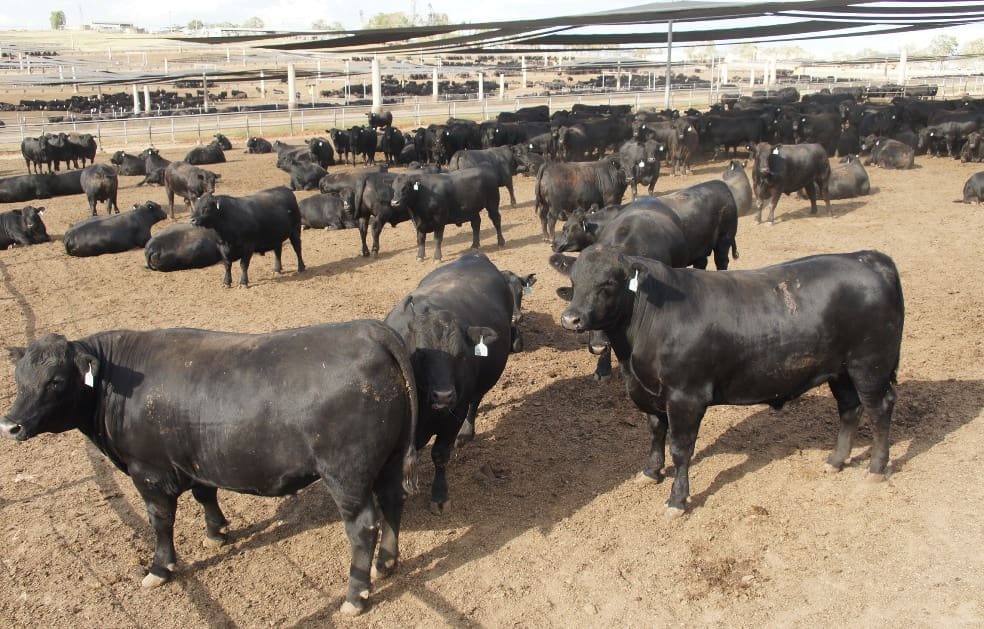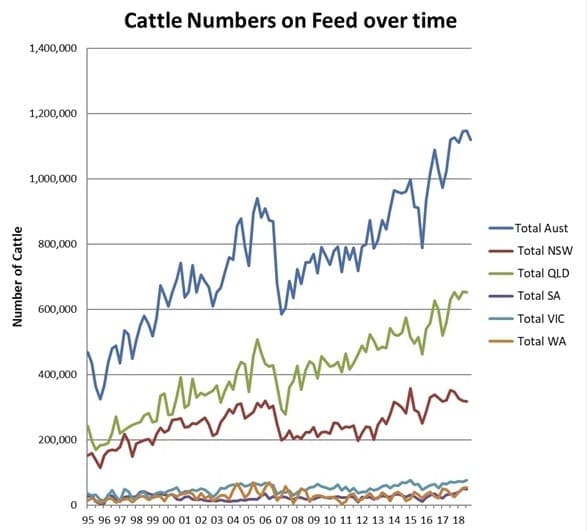
150-day grainfed Angus steers close to close out at NH Foods Whyalla feedlot near Texas.
CATTLE on feed numbers across Australia for the September quarter remained at close to record levels, with only minor seasonal declines recorded in some southern states.
Driven by strong international beef demand and drought conditions across large parts of eastern Australia, total numbers on feed was reported at 1,119,329 head, down 28,064 head or 2.5pc from the June quarter, according to the results of the latest survey conducted by the Australian Lot Feeders Association and Meat and Livestock Australia.
Largest feeding states Queensland and New South Wales recorded gains, with Queensland up 1.1pc, to 660,269 head, and NSW 1.6pc higher at 321,951 head.
This was offset by decreases in Victoria and South Australia, down 12.4pc to 67,051 head, and 10.8pc to 42,588 head respectively. In line with seasonal trends, Western Australia reduced numbers on feed by 48.6pc since the June quarter, to 27,470 head.
Feedlot capacity across Australia currently sits at 1.365 million head, up about 60,000 head on this time last year. Almost all of that increase has been recorded in Queensland.
ALFA president Bryce Camm said strong global demand for high quality protein continued to drive the feedlot industry and help Australia meet its customers’ needs despite challenging production conditions.
“Feedlots have helped sustain beef production and Australian supply chains meet demand for high quality Australian beef despite persistent east coast drought conditions,” Mr Camm said.
“Strong global demand for protein, and in particular high-quality grainfed beef, has certainly helped the feedlot industry sustain production levels through these challenging times,” he said.

China growth
MLA’s senior market analyst Adam Cheetham said that demand for high quality Australian grainfed beef in export markets had remained robust – especially in China.
“Grainfed exports to China have increased 45pc year on year to 19,990 tonnes for the September quarter, largely fuelled by the impact African Swine Fever was having on protein availability,” Mr Cheetham said.
In line with robust demand, the Queensland 100-day grain fed steer OTH indicator rose 11pc year-on-year to average 589¢/kg cwt in the September quarter, and steadily increased to be in line with record prices set in October 2016, he said.
“Feedlot operators also experienced a reprieve in grain prices albeit from historical highs, with wheat ex-Darling Downs averaging $401/t and barley $400/t, representing a decline of 7pc and 6pc year-on-year, respectively.”
The NLRS feeder steer indicator averaged 294¢/kg live weight) in the September quarter, an increase of 4pc from the previous quarter and 5pc above year-ago levels.
